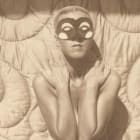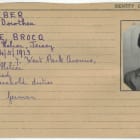
Discover the story behind some of the objects and archives
in our collection

Secret stamps
At first glance, it may seem an object of interest only to stamp enthusiasts...

Sir Anthony Paulet Portrait
The oldest portrait in the collection can be found at Mont Orgueil Castle and depicts Sir Anthony Paulet, Governor of Jersey.
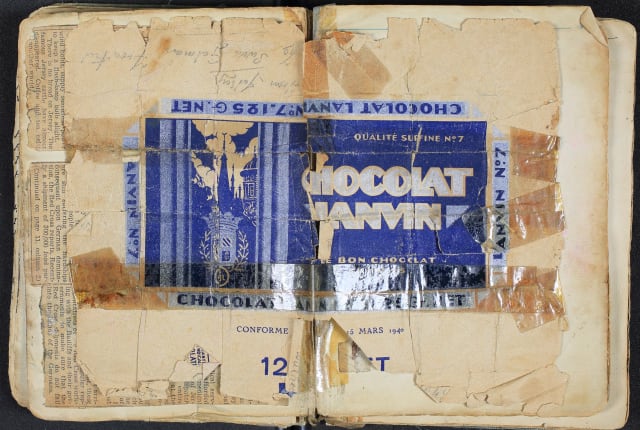
The Chocolate Wrapper
Tis scrap of paper is, as far as we know, the only detailed record of a young Jerseyman’s deportation.
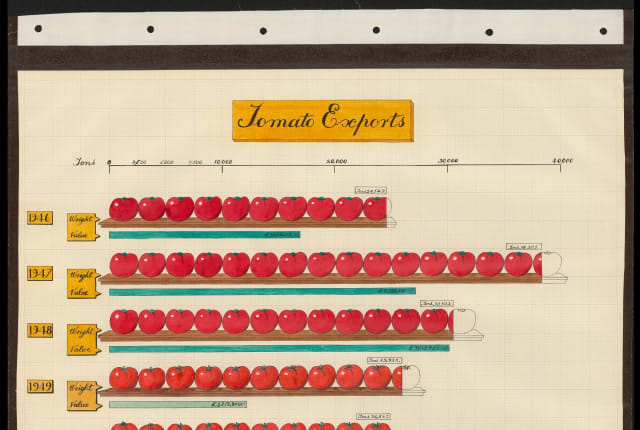
The Tomato Book
Affectionately known by Archive staff as the ‘Tomato Book’, this document is from the States Impôts Department.

Victoria Cross
Instituted by Queen Victoria in 1856 by Royal Warrant, the Victoria Cross is the highest military decoration awarded for valour to members o
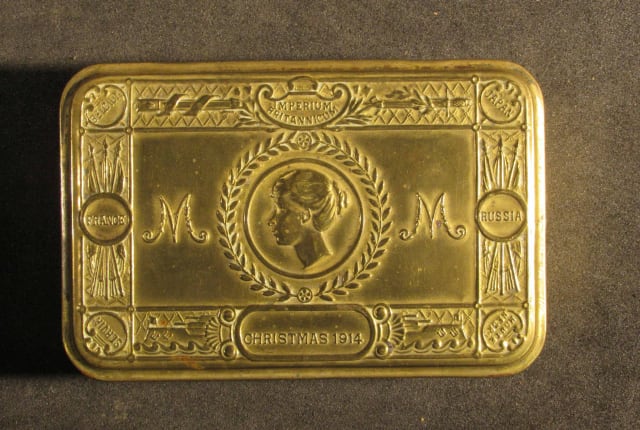
Wartime Gift
Princess Mary Gift Boxes, which were created in 1914 and intended to be distributed as a Christmas gift to all soldiers on active service.
In the parish of St Clement, near Green Island, there is a large rock formation steeped in legend. Now located in the grounds of Rocqueberg, the Witches Rock has long been associated with witchcraft in Jersey. In fact, a tourist guide from 1875 wrote of Rocqueberg that ‘No Jersey girl or Jersey man would have brought you here on a Friday night, particularly if there was a full moon.’
According to L’Almanach de la Chronique de Jersey (1895), translated by John H. L’Amy in Jersey Folk Lore (1927), legend had it that in the small fishing village of La Rocque, there once lived a beautiful young woman named Madelaine, who was betrothed to a fisherman named Hubert. Hubert had a fascination with magic and the occult, and would often take long walks in the evening, around places with supernatural associations. One night, he walked towards Rocqueberg, where he fell asleep next to the Witches Rock. When he awoke, the rock had vanished, and Hubert found himself in an enchanted wood, glowing with lights, and with beautiful nymphs dancing around him. The most beautiful of the nymphs had Hubert spellbound, and he danced with her all night, vowing to return to her again the following evening.
When Hubert returned home, he recounted the events of the night to Madelaine, who warned him against returning to Rocqueberg. With Hubert determined to return however, Madelaine sought advice from the local priest, who encouraged her to follow her fiancé to the rock in order to save him. Travelling through the stormy night, Madelaine followed Hubert to Rocqueberg, where she was met with a terrible scene. There was Hubert, dancing as he had done the night before, but no longer was he surrounded by beautiful nymphs, instead by a group of haggard and terrifying women, shrieking and chanting in a demonic manner. They unleashed their fury on Hubert, who stood helpless against their powers. Armed with a crucifix given to her by the priest, Madelaine raised the cross in front of her eyes and approached the witches. The scene changed in a flash; the demonic fires extinguished and the witches evaporated from the Earth, while Hubert collapsed to the ground unconscious. It is not told what became of Hubert and Madelaine after the events of this night.
Another legend, recounted in Jersey Witches, Ghosts and Traditions by Sonia Hillsdon (1987), told that any fisherman who sailed past the Witches Rock had to throw the thirteenth fish he had caught to the witches as a tribute, otherwise the witches would raise a storm that would see the fisherman’s boat wrecked and the man drowned. It is said that one brave fisherman, despite knowing the dangers, laughed at the witches when he sailed past Rocqueberg one day. As his payment, he held up a large five-rayed starfish and cut off one of its rays so that it resembled the shape of a cross. He then threw this towards Rocqueberg shouting “La Crouée est mon pâsseport” (The Cross is my passport), while the witches sang and danced in the storm. Immediately, the storm died down and the witches disappeared with a shriek. They were never seen at the Witches Rock again.
To this day, it is said that the imprint of a cloven hoof can be found upon the Witches Rock at Rocqueberg.
This postcard in our collection features an illustration of the witches gathered at the Witches Rock. In this image, they appear as young women, similar to what Hubert would have encountered in the tale, rather than as they appeared to Madelaine later on. The illustration is by Violet M. Roberts, who similarly illustrated other famous Jersey tales, such as the legend of the Prince’s Tower, and Saint Helier and the pirates. These postcards were produced in the early 1900s.

History
The German Occupation
A brief history of the German Occupation of Jersey, from 1 July 1940 to 9 May 1945
History
Claude Cahun and Jersey
Claude Cahun (1894-1954) was an artist, photographer and writer, best known today for surreal self-portrait photographs.
History
Jersey in the Early Medieval Period
Discover the history of Jersey during the Viking era, we'll take a closer look at the political and cultural landscape.
History
Island at war
The Channel Islands were occupied by Nazi forces during World War II, read one woman's extraordinary story.
History
The Black Dog of Bouley Bay
Although it is very small, just nine miles by five, Jersey has an incredibly rich history and heritage of myths and legends.
History
Corn riots
Learn about the corn riots of 1769, why they happened and how this public protest inspired change.









